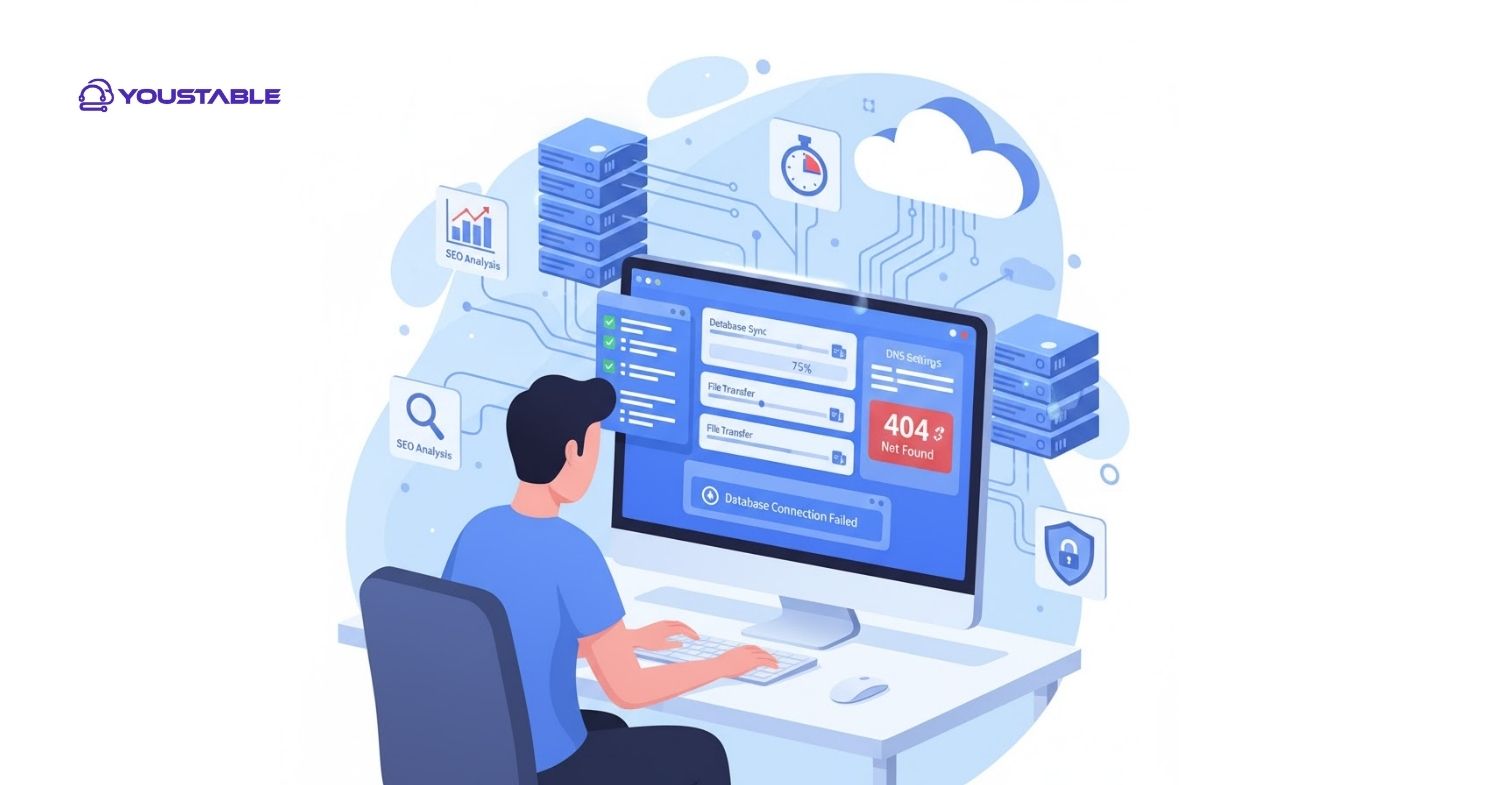Website migration problems can arise when transferring your website from one host, domain, or platform to another. These issues often happen because of broken links, missing files, DNS misconfigurations, or database errors during the move. Even small mistakes can cause downtime, lost traffic, or poor SEO performance. The process may seem simple, but it requires careful planning and execution to prevent major disruptions that affect both users and search engines.

In this guide, we’ll cover the most common website migration problems and how you can fix them quickly. You’ll learn how to prevent downtime, preserve SEO rankings, and ensure your website runs smoothly after the migration. Whether you’re moving to a new host or upgrading your CMS, this article will help you troubleshoot and avoid costly migration mistakes.
Top Website Migration Problems and How to Fix Them
Before we dive into the fixes, it’s important to understand what causes these issues. Below are the most common website migration problems users face—and the practical steps you can take to resolve them fast.
DNS Propagation Delays
One of the most frequent website migration problems is DNS propagation delay. This occurs when the new DNS settings take time to update across global servers. During this period, some visitors may still reach your old hosting server, causing inconsistent access or downtime.
To fix this, update your DNS settings at least 48 hours before the migration and lower your TTL (Time To Live) value temporarily. This helps the new settings propagate faster. Always verify DNS records using online tools and ensure your domain points correctly to the new server before making the final switch.
Broken Internal Links and Missing Assets
Broken links are another common website migration problem that can harm SEO and user experience. When URL structures change or files aren’t transferred properly, visitors may encounter 404 errors or missing images.
To fix this, use tools like Screaming Frog or Ahrefs to crawl your site and find broken URLs. Then, set up 301 redirects from old URLs to new ones. Double-check your file paths, image links, and internal references to ensure everything loads correctly after migration.
Database Connection Errors
Database connection failures are typical website migration problems that prevent your site from loading. These happen when the database credentials, hostname, or configuration files aren’t updated properly during the move.
You can fix this by checking your wp-config.php or configuration file to ensure your database name, user, and password match the new server credentials. If using WordPress, reimport the database and verify that table prefixes and permissions are correctly set. Testing on a staging site before going live helps catch such issues early.
Lost SEO Rankings After Migration
Losing search engine rankings is one of the most serious website migration problems site owners face. If URLs, metadata, or sitemaps aren’t handled correctly, search engines may treat the new site as entirely different.
To fix this, make sure all URLs are redirected using 301 redirects and update your sitemap in Google Search Console. Preserve title tags, meta descriptions, and canonical URLs. Monitoring traffic and crawl errors for the first few weeks after migration helps ensure your SEO value remains intact.
Website Downtime or Slow Performance
Website downtime and slow loading are often the result of server incompatibility or resource limitations—two common website migration problems that frustrate users. A sudden traffic surge on the new server or misconfigured settings can also trigger these issues.
To resolve this, test your site’s performance before migration using tools like GTmetrix or PageSpeed Insights. Choose a reliable hosting provider with enough bandwidth and server capacity. After migration, monitor uptime and server response times using a tool like UptimeRobot.
Conclusion
Dealing with website migration problems can be stressful, but understanding their causes makes fixing them much easier. From DNS delays to broken links and SEO losses, each issue has a clear solution if you plan carefully and test thoroughly.
Always back up your site before making changes, use redirects wisely, and monitor your performance after the move. With the right preparation and troubleshooting steps, you can complete your migration smoothly and maintain your site’s functionality, rankings, and user trust. If problems persist, don’t hesitate to contact your hosting provider’s support team for expert help.


